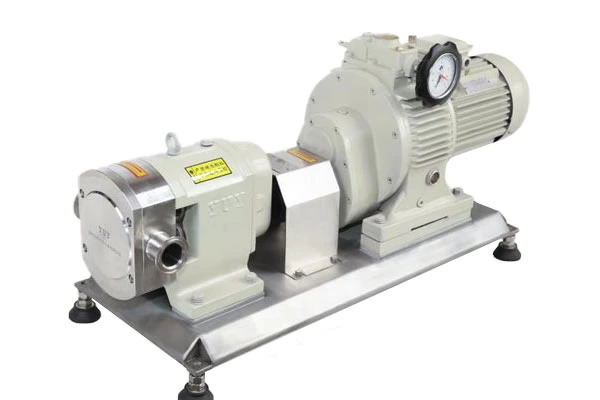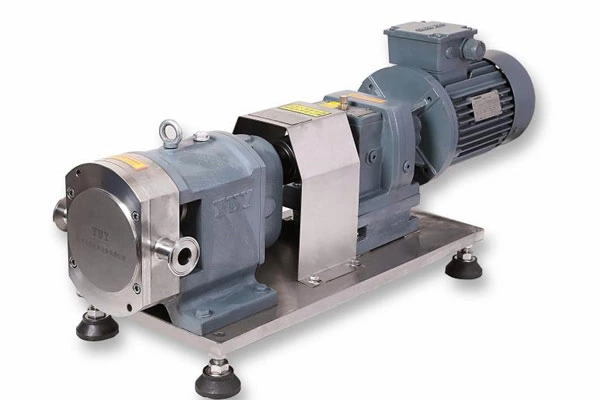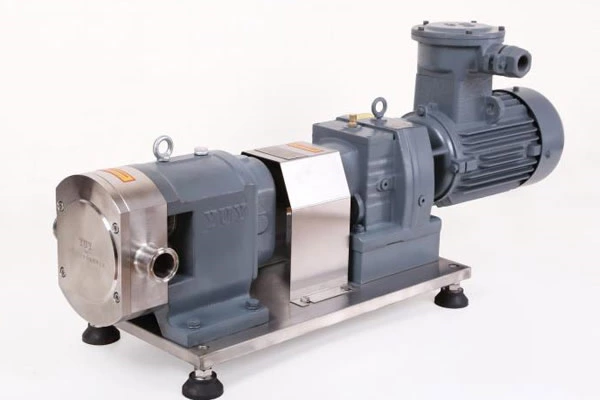The Sanitary Rotary Vane Pump Is Made Of Stainless Steel
Sanitary Rotary Lobe Pump is made of stainless steel, with a light structure and beautiful appearance. Compared with casting pumps, the quality of key parts is equivalent to 1/31/8 of similar casting pumps, which saves a lot of materials when making pumps. It also saves more than half of the space. The outer surface can be polished and the appearance is as smooth as a mirror. Shot peening can also be used to achieve a matte effect. The parts of sanitary rotary vane pumps are highly universal, and the space for the impeller of sanitary rotary vane pumps to move in the volute is much larger than that of casting pumps.
The sanitary rotary vane pump adopts axial reflux external mixing, and through the unique design of the pump body and impeller flow channel, it does not need to install a bottom valve and irrigate water like a general self-priming clean water pump, and can also absorb and discharge liquids containing large solid particles and long fiber impurities. It can be widely used in municipal sewage projects, river pond farming, light industry, papermaking, textiles, food, chemicals, electricity, fiber, slurry and mixed suspension, etc.
The sanitary rotary vane pump is designed as a two-phase flow impeller with a wide outlet, so the same volute can be equipped with two sets of impellers. The three-dimensional flow impeller is used for clear water, and the impeller is designed using Cai's two-phase flow theory for two-phase flow, which not only guarantees the design performance parameter table of the pump, but also guarantees the efficiency and corrosion resistance of the pump. Especially when used in equipment supporting the main engine, the sanitary rotary vane pump can better reflect the superiority of the main engine, improve the overall performance of the main engine equipment, and enhance the external image of the main engine.
The sanitary rotary vane pump is based on the ordinary sewage pump and uses an automatic stirring device. The device rotates with the motor shaft to generate a very strong stirring force, stirring the sediment in the sewage pool into a suspended substance, sucking it into the pump and discharging it, improving the pump's anti-blocking and sewage discharge capabilities, completing drainage, sewage cleaning, and silt removal at one time, saving operating costs, and is an environmentally friendly product with obvious advancement and usability.
When the sanitary rotary vane pump is working, the high-speed rotation of the impeller creates a vacuum at its inlet. Under the effect of the difference between the atmospheric pressure on the water surface of the suction pool and the absolute pressure at the impeller inlet, water flows from the suction pipe end to the inlet of the impeller. Since 1 atm is equal to 10.33 mh2o, the maximum suction height HSS of the self-priming pump will not exceed 10.33 m. In fact, this pressure difference must be converted into position head and flow head during the flow of water, and overcome various head losses, and maintain a certain energy (pressure head) at the inlet, which makes the suction height of the self-priming pump less than 10.33 m. From the water inlet of the self-priming pump to the inlet of the impeller, the water-passing cross-sectional area of the flow channel is generally reduced. When the flow rate is constant, the flow rate increases along the way, but the pressure is reduced accordingly. The absolute pressure of the suction pipe of the self-priming pump decreases along the way according to the direction of the water flow. The inlet of the water pump is not the place with the lowest pressure in the pump. The place with the lowest water flow pressure in the pump is on the back near the inlet of the blade.







